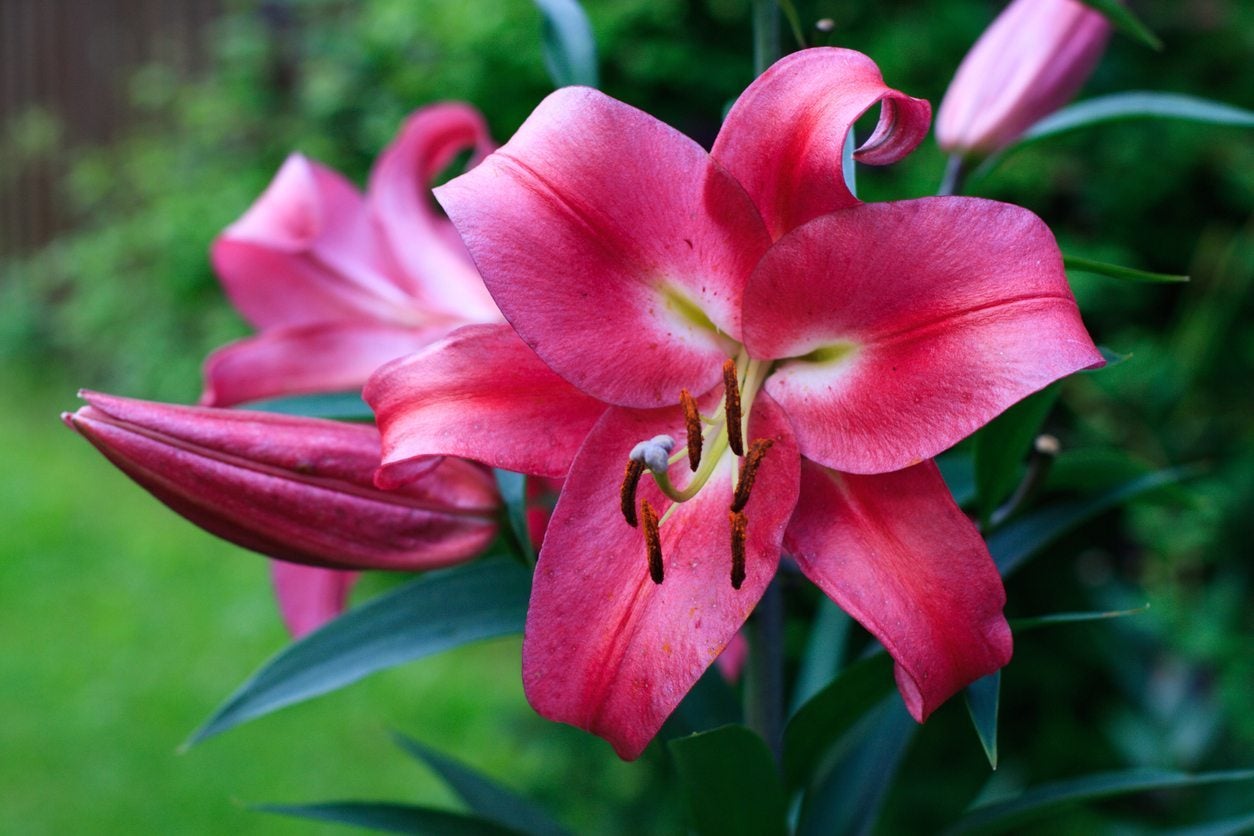Should You Stake Lily Plants: Tips For Staking Lilies In The Garden


Do lilies need staking? A lot of taller plants will eventually need a little extra support if you don’t want your flowers lying in the dirt. This is especially true in late summer and fall and with tall, top-heavy flowers like lilies. Staking lilies is a simple way to ensure your late season beds continue to add beauty to your garden.
Should You Stake Lily Plants?
There is no real reason in terms of the health of the plant to stake lilies in the garden. Your perennial blooms will come back next year, whether they droop now or not. The main reason for staking lilies at all is to keep up appearances. Your perennial beds just don’t look that nice when all the flowers droop over and land in the dirt or mulch. A little staking is great for your garden, but you need to know how to do it right to keep the flowers happy and healthy as well as attractive.
How to Hold up Lily Plants and Blooms
Lilies can grow anywhere from 2 to 6 feet (61 cm. to 2 m.) tall, which means the structure of the stem may begin to fail them at some point. Stakes for lily plants can be any type of garden stake, like a bamboo dowel, but you can also get creative. If you plant the flowers near a fence, trellis, or porch, you can use these structures to prop up your plants as they bloom and grow top heavy. If you want the staking to be hidden, standard green bamboo is a good choice. They blend in well in the garden. You can also use different lengths of dowel, starting short and replacing it with subsequently taller stakes to avoid an imbalanced look and a whole lot of sticks towering over your bed. Another popular option is to use a tomato cage once the lilies have grown taller. When tying the lilies to a stake or other structure, use twine or fabric, not wire that can harm the stem. Leave enough space for the stem to grow, but not so much that it will just flop over again. For the tallest lilies, you will probably need to tie the plants to the stake in a few places. Always include a tie just below the flower; otherwise, a strong wind can break it off the stem.
Gardening tips, videos, info and more delivered right to your inbox!
Sign up for the Gardening Know How newsletter today and receive a free copy of our e-book "How to Grow Delicious Tomatoes".

Mary Ellen Ellis has been gardening for over 20 years. With degrees in Chemistry and Biology, Mary Ellen's specialties are flowers, native plants, and herbs.
-
 Moody Blooms For Spring: 8 Types Of Black Flowers To Add Drama To Spring Displays
Moody Blooms For Spring: 8 Types Of Black Flowers To Add Drama To Spring DisplaysFrom midnight burgundies to inky violets, several types of black flowers can enrich and embolden a spring display. Try these brooding bloomers for a moody garden
By Tonya Barnett
-
 Can Snake Plants Live Outside? Everything You Need To Know For Snake Plants Al Fresco
Can Snake Plants Live Outside? Everything You Need To Know For Snake Plants Al FrescoSnake plants can live outside given the right conditions, but be careful that they don't take over! Learn the best way to use snake plants in your landscape.
By Mary Ellen Ellis